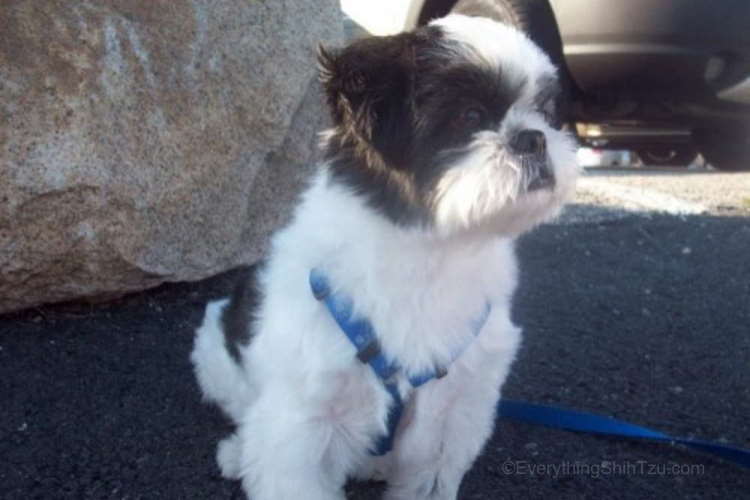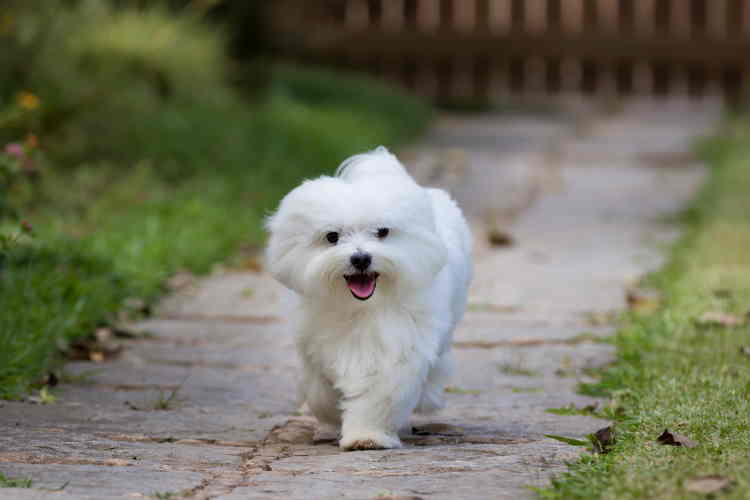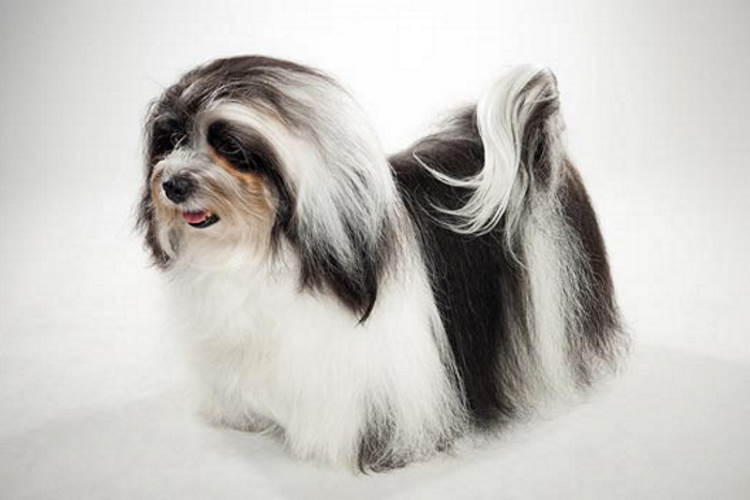Shih Tzu vs. Maltese vs. Havanese
WRITTEN BY STACY | EVERYTHINGSHIHTZU.COM
It’s not surprising that people confuse Shih Tzu with Havanese and Maltese dogs, as the three breeds look very similar, especially with their long, silky coats.
You might even think that they are one and the same; however, these three dog breeds are not interchangeable.
The Shih Tzu and Havanese are more alike than the Shih Tzu and Maltese, however, all three breeds have distinct differences that separate them from each other.
So, what’s the difference between Shih Tzu, Maltese and Havanese?
Other than their appearances, one of the biggest differences between Shih Tzu and Maltese is their temperaments, and one of the noteworthy differences between Shih Tzu and Havanese is their trainability.

If you want a playful companion dog that loves to be around people, the more timid Maltese would not be the best choice; the outgoing Shih Tzu, on the other hand, is a great match!
If you plan to train your dog on your own, then a Havanese might be less trying on your patience than the stubborn Shih Tzu.
These three small dog breeds may look very similar at first glance but there are some big differences in each of these breeds that will help you tell them apart.
Are you ready to get the low down on the differences (and similarities) between these three breeds? Then read on!
How are Shih Tzu Different from Maltese?
Shih Tzu and Maltese are both toy breeds that have the ability to grow the iconic long, flowing coat that gives them such an impressive appearance.
This also makes both the Shih Tzu and the Maltese high-maintenance when it comes to grooming.
Like its Shih Tzu counterpart, Maltese like to play and can be very affectionate.
As far as similarities go, there are a few, but there are a huge number of differences between these two breeds.
The first difference goes all the way back to both breeds’ origins.
Maltese are believed to have originated in the Mediterranean, most likely on Malta (hence their name).
And Shih Tzu first made their appearance in China, most likely in the Emperor’s palace.
Here are some other notable differences between Maltese and Shih Tzu:

Temperament
Shih Tzu are wonderful companion dogs that love to be around their human family.
While Maltese can be very affectionate as well, they are not as good a match for households with children and other pets, especially cats.
Maltese also have more of a guard dog mentality than Shih Tzu, so their barking can sometimes be excessive.
Both breeds can be well-mannered around strangers and other dogs, but overall, the Shih Tzu is more suited to a family environment.
Activity
Maltese tend to possess a higher energy level than Shih Tzu, so Maltese benefit from more activity and things like agility training.
Maltese enjoy playing outdoors and running and jumping around and for a little dog, they can actually be quite fast.
Shih Tzu are known to be one of the slowest dog breeds and have fewer exercise requirements.
They are content to cuddle and snuggle, although they do still like to play.
An interesting note: since Maltese lean towards being a bit more active, the average Maltese requires about 45 calories per pound, whereas the Shih Tzu only requires approximately 35 calories per pound.
Training
Maltese respond well to treat-based training and enjoy agility training, however they are very difficult to house train.
Shih Tzu are also not easily house trained and can be very stubborn when it comes to other forms of training.
Training is possible with both breeds, but you will need a lot of patience and determination, no matter which of the two breeds you are trying to train.
Appearance
Although both breeds have the ability to grow out a long, silky coat, the Maltese’s coat is a single coat compared to the Shih Tzu’s double coat.
Also, a purebred Maltese is always white. Shih Tzu, on the other hand, can show a wide variety of color combinations.
Maltese tend to be the smaller of the two breeds, usually staying between 7 and 9 inches in height, and weighing no more than 7 pounds; compared to the Shih Tzu’s stats of 9 to 16 pounds, and 8 to 11 inches tall.
Their small size does make both pets suitable for apartment living.
Another distinction between the two breeds is the Shih Tzu’s underbite, which is a breed standard.
Grooming
This is one area where there are not many differences.
Both of these dogs have extensive grooming requirements.
Their coats and nails grow very quickly so it is important to keep nails clipped, and their coats require frequent brushing.
Hair should be kept out of the eyes, ears regularly cleaned, and the hair around the eyes wiped and teeth brushed daily.
Both dogs should also have regular professional dental cleanings.
If you do not have the time to devote to grooming your dog, then you either need to be prepared to pay for regular professional grooming sessions or select a different breed that is more low maintenance.
Health
Both of these breeds are rather healthy pups, with just a couple of conditions that they are prone to get.
Maltese owners are advised to keep a lookout for issues that can hint at the luxating patella (where the kneecap moves out of position), heart conditions and congenital liver issues.
They are also prone to allergies and glaucoma.
Shih Tzu, with their double coat and short face, do not do well in heat and are therefore very susceptible to heatstroke.
Shih Tzu are prone to hip dysplasia, as well as luxating patella, several eye conditions and also bulging or ruptured discs in the back.
Lifespan
The average lifespan of both breeds combined is roughly 10 to 13 years.
Shih Tzu have a wider range of 10 to 18 years, and Maltese live between 12 to 15 years, on average.
However, both breeds have records of dogs that have lived well into their twenties.
Shih Tzu vs. Havanese

Unlike Shih Tzu and Maltese, Shih Tzu and Havanese actually have many more similarities than differences.
Still, there are several notable characteristics that vary between the two breeds.
Just like the Shih Tzu and Maltese, the country of origin is where the Havanese and Shih Tzu’s differences begin.
The Havanese originated in Cuba, taking its name from the Cuban capital city of Havana.
Although there are those that believe that the Havanese actually originated somewhere in the Mediterranean and were imported to Cuba.
Either way, it is considered the national dog of Cuba.
Havanese puppies also tend to cost more than a Shih Tzu, averaging around $850 compared to $500 for a Shih Tzu pup, although you might pay higher amounts than these depending on where you purchase your dog.
Here’s how Shih Tzu and Havanese compare, and what makes them different:
Temperament
Both breeds are extremely affectionate and loving and make wonderful family pets.
They do well with children and other dogs, provided they are socialized properly, of course.
Since both dogs are small, it is important that children know how to handle them correctly, and very young children should avoid picking up the dogs.
It is worth noting that although a good family pet, neither of these breeds do very well in an extremely busy household; because both Havanese and Shih Tzu demand a lot of attention from their human family.
These pups want nothing more than to have the affection, love, and approval of their owners.
Activity
Shih Tzus and Havanese do well with a minimal amount of exercise each day (a few short walks) and sufficient time to play.
Daily play is critical to avoid potential behavior issues that can manifest due to boredom and lack of mental stimulation.
These issues can include excessive barking -- which is normally not an issue for either of these breeds if they are properly engaged -- and chewing on furniture and other undesirable behaviors.
Making sure your pups are properly stimulated will also help during those times that you need to be away from home; it will help alleviate possible separation anxiety issues.
Training
Training is perhaps one of the areas that shows the biggest difference between Havanese and Shih Tzu.
Where Shih Tzu are stubborn and somewhat difficult to train, Havanese are actually among the easiest toy groups to house train, and they also love to learn and please their owners.
Havanese were, in fact, popular circus dogs once upon a time, and they love to show off their tricks.
Appearance
Havanese and Shih Tzu breeds are roughly the same size, although Havanese can be slightly taller than Shih Tzu, by about half an inch, with a height range of 8.5 to 11.5 inches.
Shih Tzus tend to be a tad heavier than Havanese, weighing in between 9 and 16 pounds compared to the 7 to 13 pounds of Havanese.
Both dogs have long multi-colored coats, although the Shih Tzu’s coat tends to be denser than the soft, wavy coat of the Havanese.
Grooming
When it comes to grooming, all three of these dog breeds -- Maltese, Shih Tzu, and Havanese -- require extensive attention.
Just like Shih Tzu and Maltese, Havanese also need frequent brushing to keep their coats healthy and free from painful matting.
The hair needs to be trimmed and kept out of the eyes.
Daily teeth brushing is also very important as well as wiping the hair around the eyes to avoid discoloration.
Havanese also need regular nail trims and professional teeth cleanings.
Health
Havanese and Shih Tzu are strong little dogs that have relatively few health issues.
Both breeds are prone to eye issues, which is why it is so crucial to keep the hair trimmed away from the eyes to avoid irritation and problems.
Shih Tzu and Havanese are both susceptible to the luxating patella.
In addition, Havanese can also have issues involving a lack of thyroid hormones and liver shunt -- a congenital condition where the blood that flows from the intestines, bypasses the liver instead of being filtered through it.
Lifespan
Of course, many factors can affect a dog’s lifespan, but Havanese and Shih Tzu are both sturdy little dogs that can live for a long time.
The average lifespan of each breed is about the same, covering a range from 11 to 16 years, and in some cases even longer.
Shih Tzu Maltese Mix is a Malshi or Mal-Tzu
A Malshi, or Mal-Tzu, is a mixed breed that is the result of a purebred Shih Tzu and purebred Maltese.
Therefore, as with many mixed breeds, the Malshi will tend to inherit traits from both of its parents.
A good breeder will encourage the best traits from each parent breed to make their way into the playful Malshi mix.
This mix sustains the affectionate and playful disposition of both of its parents and love to be around their human companions.
However, due mainly to their small size, they are not always the best fit for a household with young children.
Also, like both of its parents, the Malshi can be a little more difficult to train but responds well to reward-based methods.
This mixed-breed does not tolerate heat very well, nor does it need a lot of exercise; however, Malshi need a lot of playtime.
It's essential for them to stay engaged so they do not get into mischief.
Just like its parents, a Malshi has some significant grooming requirements, but these can be reduced greatly with a puppy cut hairstyle, where the coat is kept short.
It is still important to stay on top of keeping the eyes and ears cleaned, nails trimmed and brushing teeth regularly.
Shih Tzu Havanese Mix - Hava-Tzu
 Rufus - Shih Tzu Havanese mix
Rufus - Shih Tzu Havanese mixIf you opt for a Shih Tzu Havanese mix, then a Havashu is what you get.
Also known as Hava Tzu, Havatzu, and Hava-Tzu, this cute mixed breed maintains the playful and affectionate nature of both of its parent breeds.
It also sheds very little, just like Havanese and Shih Tzu, making it a good possibility for those suffering from dog allergies.
You will still need to engage in some involved grooming with this mixed breed, although a Havashu's coat can vary depending on what parent it takes after the most.
If it inherits the wavy, soft coat of the Havanese parent, you might be able to get away with brushing every few days instead of a daily routine.
Havashu pups tend to follow in the footsteps of their Havanese parents and do rather well with training.
They are very intelligent and have a strong desire to please their owners.
However, they also have the potential to inherit some of the stubborn streak that is associated with Shih Tzu, so some early basic training is recommended.
Overall, this sturdy mixed breed makes an excellent companion and great choice for a family pet.
Havashu also lean towards the more energetic side of the two breeds, requiring several walks a day and lots of playtime.
These dogs can do very well with agility type training, and they love a run and some exploration time off-leash in the dog park.
If you do consider a mixed breed like one of the above mentioned “designer mixes,” remember that it is expected that the dog will possess traits from each of its parents.
Although breeders try to funnel the best traits from each purebred parent into the mix, there is always the possibility that the results will vary.
When it comes down to it, each dog is a unique pup, with its own personality and disposition.
The breed standards are meant to be a guideline for what to expect from most of the dogs within a particular breed.
When choosing a dog, it is always best practice to meet the actual dog that you are getting to see if you will be a good fit together.
If you were a little confused about what made Shih Tzu different from Maltese and Havanese, hopefully now you have a better understanding.
If you still can’t decide which breed is the right fit for you, there is always the option of a mixed breed; such as the Mal-Tzu or Havashu.
Basically, if you opt for a mixed breed, you will get a combo of both dogs’ traits, however, there’s no guarantee of what that combo will be.
Bottom line is the Shih Tzu, Maltese and Havanese dog breeds bring a lot of happiness to our lives, but it's always good to know what you can expect from your furry friend.
Here’s to many happy and wonderful years with your furry pal!
- Home
- Shih Tzu Information
- Maltese, Havanese



